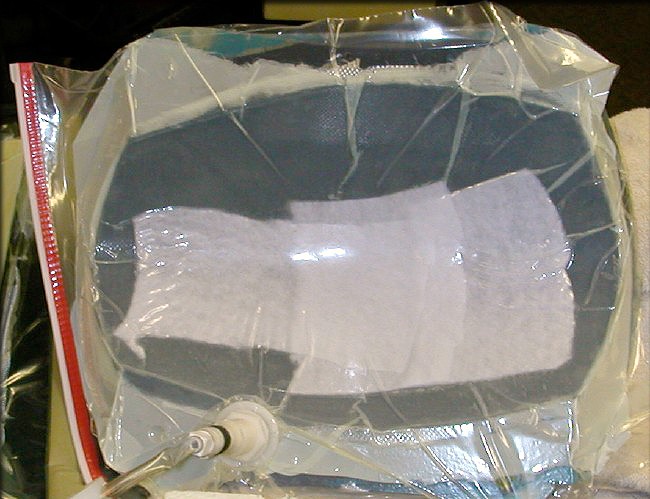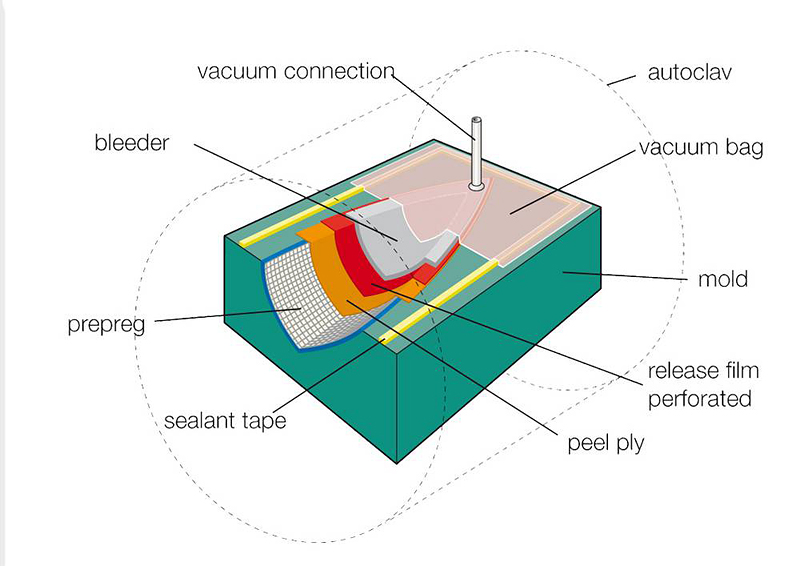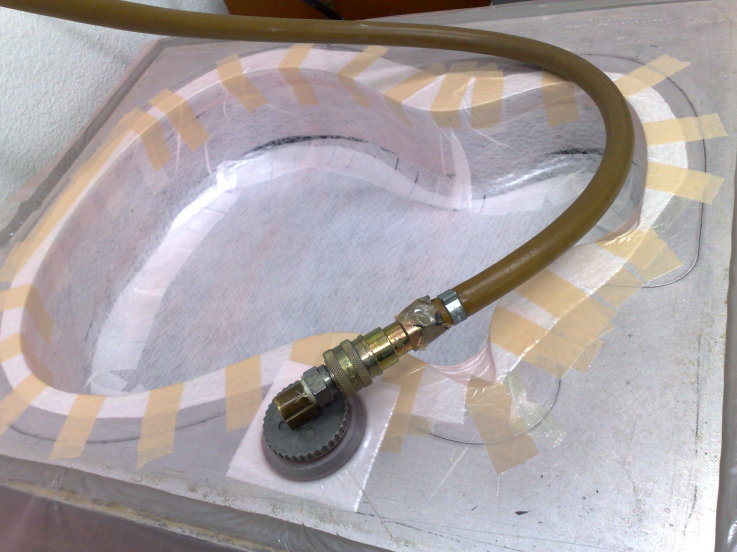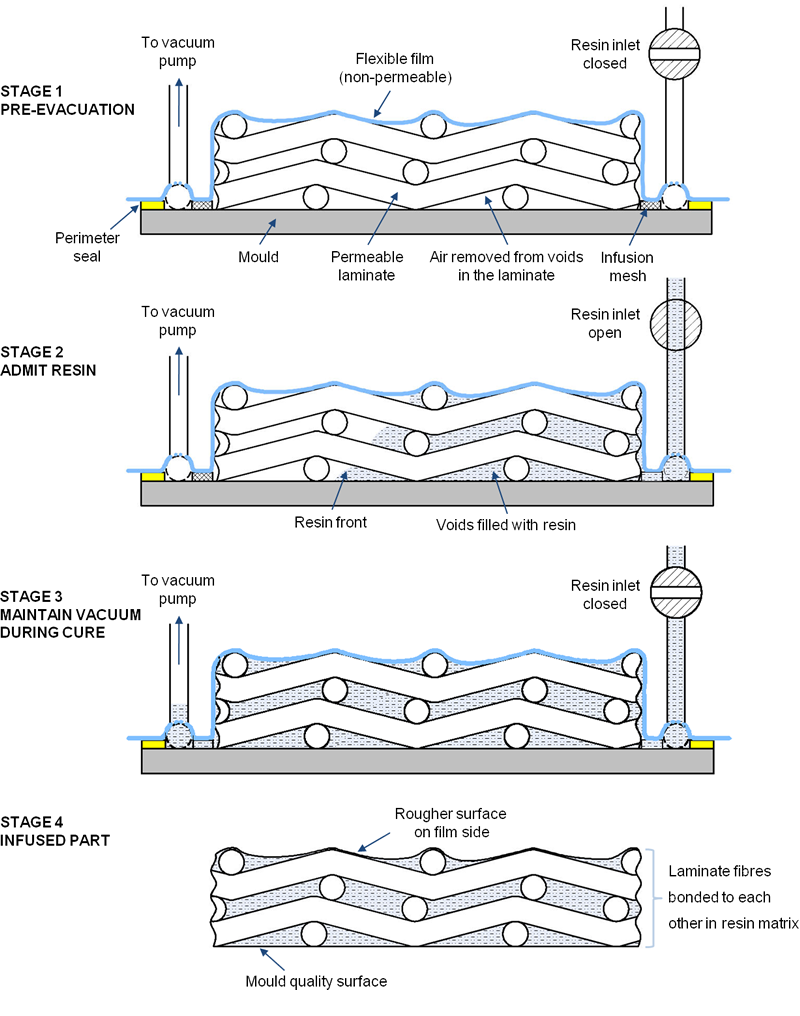|
| ||
| The Ovation Fan Club | ||
| ||
| Random quote: "One good thing about music, when it hits you, you feel no pain." - Bob Marley |
 The History of the Bowl The History of the Bowl
| View previous thread :: View next thread | |
| Members Forums -> General Posting | Message format | |
| DanSavage |
| ||
Joined: June 2012 Posts: 2339 Location: Pueblo West, CO | Good question! These tops aren't mine. TJR sent me these pics, so I imagine they belong to him. I have no idea how many production molds survived. Generally speaking, the fiberglass molding process follows these steps: 1) Master plug --created using wood or some other medium. (I've always used wood, foam, etc.) 2) Master mold --Molded off the master plug using fiberglass. 3) Production plug --Molded off the master mold using fiberglass, and a duplicate of the master plug. 4) Production mold --Molded off the production plug using fiberglass and a duplicate of the master mold. This process allows the manufacturer to use the production plug to produce an unlimited number of production molds. When the production molds finally wear out, the production plug is used to produce more production molds. When the production plug finally wears out, the Master mold is used to produce another (set) of production plugs, which are, in turn, used to produce more production molds. Now, it's entirely possible what we're seeing here in this pic is not a production mold, but the master plug, the wooden plug being more 'dramatic' in the photos. | ||
| |||
| FlySig |
| ||
Joined: October 2005 Posts: 4075 Location: Utah | The bracing on my 1976 Patriot (center hole A braced) is quite a bit daintier than the bracing in those pictures. Really the braces are surprisingly thin and light. | ||
| |||
| DanSavage |
| ||
Joined: June 2012 Posts: 2339 Location: Pueblo West, CO | I just finished pulling the top off my 1619 and the A brace wood is ~1/8" thick, or about 1/2 that of the X braces. | ||
| |||
| DanSavage |
| ||
Joined: June 2012 Posts: 2339 Location: Pueblo West, CO | Here's what's left of the A braces from my 1619. Edited by DanSavage 2014-05-17 6:51 PM | ||
| |||
| TJR |
| ||
Joined: July 2002 Posts: 288 Location: Maine | Nice documentary you have going on here. Can't wait to see the rest of the rebuild. | ||
| |||
| rhoadsscholar |
| ||
Joined: September 2009 Posts: 180 Location: michigan | Great stuff. I just picked up a 40th anniversary balladeer shiny bowl (2007 I believe). I think they only made 50 (mine is serial number 3) What type of process did they use on these 40th anniversary reissues. I also have the 40th anniversary Glen Campbell which is a hand laid fiberglass (but not shiny) | ||
| |||
| DaveKell |
| ||
Joined: November 2011 Posts: 741 Location: Fort Worth, TX | rhoadsscholar - 2014-05-17 10:10 PM Great stuff. I just picked up a 40th anniversary balladeer shiny bowl (2007 I believe). I think they only made 50 (mine is serial number 3) What type of process did they use on these 40th anniversary reissues. I also have the 40th anniversary Glen Campbell which is a hand laid fiberglass (but not shiny) Wow, I was the original purchaser of serial number three! If you don't mind me asking, how did it come into your hands after going off to Colorado following a trade for it? The only thing about it that bugged me was the ripple lines you could see in the top that revealed where the bracing was.I guess this happened during certain humidity conditions but I was always afraid the top was going to crack because of it. The top on it must have been really thin but it sure was a nice responsive guitar. | ||
| |||
| BanjoJ |
| ||
Joined: September 2012 Posts: 813 Location: Thredbo, NSW, Australia | DanSavage - 2014-05-18 11:50 AM Here's what's left of the A braces from my 1619.> I'm hoping the backdrop for the bracing is an oak desk or table, and not an extended soundboard! (I was wondering how the pick scratches came to be on the inside.) In any case, thank you so much Dan for your story here and in the 1619-4 rebuild. I'm following them both with interest. | ||
| |||
| FlySig |
| ||
Joined: October 2005 Posts: 4075 Location: Utah | DaveKell - 2014-05-18 2:33 AM The only thing about it that bugged me was the ripple lines you could see in the top that revealed where the bracing was.I guess this happened during certain humidity conditions but I was always afraid the top was going to crack because of it. The top on it must have been really thin but it sure was a nice responsive guitar. My 1976 Patriot shows the same bracing lines due to the thinness of the top and possibly the thinness of the braces. It is the very best sounding guitar I've ever played, O or A or otherwise. Black gloss O's show these lines more than other finishes. There don't seem to be any structural concerns. My guitar is 37 years old and is going strong. | ||
| |||
| DanSavage |
| ||
Joined: June 2012 Posts: 2339 Location: Pueblo West, CO | BanjoJ - 2014-05-18 5:03 AM I'm hoping the backdrop for the bracing is an oak desk or table, and not an extended soundboard! (I was wondering how the pick scratches came to be on the inside.) In any case, thank you so much Dan for your story here and in the 1619-4 rebuild. I'm following them both with interest. Ha ha! It used to be an oak computer desk. I wanted to get rid of it, but SWMBO insisted on keeping it. I shrugged and said okay and turned into a workbench in my shop. I have no reservations about drilling holes in it, driving screws into it, spilling paint on it, scratching it, etc. While it was fine furniture at one time, now it's a workbench and is treated as such. (much to her consternation) You're very welcome. I'm glad you're enjoying it. Edited by DanSavage 2014-05-18 4:28 PM | ||
| |||
| DanSavage |
| ||
Joined: June 2012 Posts: 2339 Location: Pueblo West, CO | trickard - 2014-05-17 7:56 PM Nice documentary you have going on here. Can't wait to see the rest of the rebuild. Thanks, TJ. I think you'll like the next update to my 1619-4 thread. | ||
| |||
| DanSavage |
| ||
Joined: June 2012 Posts: 2339 Location: Pueblo West, CO | rhoadsscholar - 2014-05-17 8:10 PM What type of process did they use on these 40th anniversary reissues. I also have the 40th anniversary Glen Campbell which is a hand laid fiberglass (but not shiny) The 1st gen bowls were vacuum bagged. While this produces very high quality parts, it's pretty labor intensive. Here's a schematic drawing showing the laters used when vacuum bag molding.
And, here's a part being molded. Even though this is a slightly concave part, the process is the same for a male part like the 1st gen bowls. Notice the folds in the plastic vacuum bag. These can also be seen in the pics of the 1st gen bowl I posted and this is how they get there.
The later hand-laid bowls, like the one seen in my 1619-4 thread, are made in female molds.
And, here's a carbon fiber bowl being molded in a female mold. This part is placed into the autoclave. The pressure squeezes out the excess resin and the heat makes the part cure faster. Making parts using this method is less labor intensive and the finished parts can be produced more quickly. Not as quick as SMC prepreg, but a lot quicker than letting the resin cure naturally. So, you get high quality parts more quickly.
Any discussion about vacuum molding composites wouldn't be complete without also mentioning resin infusion. Instead of laying up cloth and wetting it out with resin, then vacuum bagging it, dry cloth is laid up, vacuum is applied and the resin is sucked through the cloth. Resin infusion is slightly more wasteful of resin, but produces the highest quality part with the highest cloth to resin ratio. To my knowledge, resin infusion is not used with autoclave molding, nor did Ovation use it in their molding process.
Edited by DanSavage 2014-05-18 5:05 PM | ||
| |||
| jay |
| ||
Joined: January 2009 Posts: 1249 Location: Texas | Dan...this is almost as good as 24. Ok...but back to scholar's question (i think)...Do you think that they made the 40th RI shinys the old fashion way? | ||
| |||
| DanSavage |
| ||
Joined: June 2012 Posts: 2339 Location: Pueblo West, CO | Jay, I haven't seen a 40th in person, so I can't say for sure how the bowls are made. Given that the original shinys were laid up over a male mold which required sanding to smooth out the wrinkles and folds, then I would say that they were weave-filled, primed, painted and polished. My modern, autoclave cloth bowl would not be able to be sanded and polished without cutting into the cloth. So, to make a modern cloth bowl into a shiny bowl would also required weave-fill, priming, painting and polishing. Was that non-committal enough? | ||
| |||
| jay |
| ||
Joined: January 2009 Posts: 1249 Location: Texas | Dan...I just enjoy the dialog, regardless of the level of commitment. Maybe someone here can pop a few pictures of their 40th bowl, inside and out for your consideration. I bought one with quite a bit of damage to the bowl...Scratches from a belt and what looked like to be a chemical melt from epoxy or something. I sent it to the MS and bowl came back looking brand new. As badly melted as it was, I thought it would have to be replaced. Nope and for some ridiciously small fee. There is no doubt in my mind, we are going to miss those guys tremendously. | ||
| |||
| DanSavage |
| ||
Joined: June 2012 Posts: 2339 Location: Pueblo West, CO | Me, too. I was just kidding around. Yes, I agree. From what I understand, finding a luthier who works on Ovation guitars isn't easy. With the factory closing down, it's a serious loss of resources. | ||
| |||
| d'ovation |
| ||
Joined: December 2003 Posts: 855 Location: Canada | I think that with the re-opening of the factory and announcement of the 50th anniversary models it's timely to bring this thread back so it hopefully can be updated. I am getting the impression that all the 50th anniversary models (and it seems ALL "current" Adamas models if there are any) are spec'd with hand laid bowls. I am wondering what process would apply to this generation of bowls and who actually makes them, as I can imagine that the 7 production workers will be quite busy and bowl making could be something to be contracted out. | ||
| |||
| Nancy |
| ||
Joined: December 2014 Posts: 1713 Location: Frozen Tundra of Minnesota | Thank You for re-opening this thread! As per his usual, Dan's Teaching Method is Exceptional! I love learning all of this, and have just learned a great deal! Thank You Dan!! It will be exciting and interesting to see what the new re-birth brings us in new technology, and what they decide to use, and why, with the New Ovations/Adamas, and how it compares and measures up to the past procedures. I look forward to learning much more! | ||
| |||
| DanSavage |
| ||
Joined: June 2012 Posts: 2339 Location: Pueblo West, CO | d'ovation - 2015-11-11 2:22 PM I think that with the re-opening of the factory and announcement of the 50th anniversary models it's timely to bring this thread back so it hopefully can be updated. I am getting the impression that all the 50th anniversary models (and it seems ALL "current" Adamas models if there are any) are spec'd with hand laid bowls. I am wondering what process would apply to this generation of bowls and who actually makes them, as I can imagine that the 7 production workers will be quite busy and bowl making could be something to be contracted out. They're probably made using the same process I described at the top of the page, namely vacuum-bagged inside a female mold, or at least that's what the modern cloth bowl I've got looks like. It's a lot more refined than the 1st gen hand-laid, and vacuum-bagged bowl that was on #485. Even so, with modern materials such as teflon mold release, one worker could lay up a dozen or so bowls per day. I know I could. The only real limit is the number of production-ready molds available. Molding a one-piece part, like the bowl, is pretty straightforward. What becomes time-consuming is when you have to seam two or more molds together to make a single part, like what I had to do when I was making the inlet ducts or nose cones for the model airplane kits I used to sell. Farming the job to an outside service only makes sense when you've got enough parts in the pipeline to offset the cost of paying someone else to do the work. | ||
| |||
| Mr. Ovation |
| ||
Joined: December 2001 Posts: 7237 Location: The Great Pacific Northwest | Comparing bowls or making statements about "deep is louder" and such must be put into context as well. The contour bowl is a different shape (yeah duh) but not only that, it is my understanding that the new bowls have different finish coats (e.g. paint) than the originals. Over time, different paints and epoxies were used throughout the process. All of these other factors affect the final tone significantly. So comparing a new hand laid bowl to a 80's or 90's or even early 2000's era bowl fair. It's even possible that a new bowl with a new thinner, lighter finish might have more resonance than an older bowl with a thicker finish of different ingredients. One of the issues with the Q was that because it was so resonant, the slightest coating dampened the tone more than was acceptable. There are also exceptions to the rules like a 12-String Shallow that Al was playing in my studio that I didn't realize was a a shallow bowl cause the thing sounded so big. Then there's Stonge's "unfinished" parts-o-damas that just booms. Why are the original SlotHeads soooo much louder... is it just time to break in.... Bottom line... I think we're just going to have to play the new guitars. My main reason for not jumping on the deep vs mid vs shallow opinion wagon is that I have had the opportunity to play and/or hear some of the rule breakers and the differences were not subtle at all. I also think the contour bowls are a stroke of genius. There is even a theory that while the depth is only slightly less than a deep bowl, the shape of the inside of the bowl actually causes the same if not more resonance on the frequencies that matter due to the way the waves hit it. Again... we're just going to have to wait and see. | ||
| |||
| d'ovation |
| ||
Joined: December 2003 Posts: 855 Location: Canada | Mr. Ovation - 2015-11-12 2:49 PM So comparing a new hand laid bowl to a 80's or 90's or even early 2000's era bowl fair. It's even possible that a new bowl with a new thinner, lighter finish might have more resonance than an older bowl with a thicker finish of different ingredients. One of the issues with the Q was that because it was so resonant, the slightest coating dampened the tone more than was acceptable. Oh boy now this goes into the territory like at AGF where they like to discuss the effects of various body woods on tone ...
Why are the original SlotHeads soooo much louder... is it just time to break in.... . So I am curious, as the late 70s seemed to have been a transitional time from handlaid to composite, what kind of bowls were used on the production Adamas 1687s of that time? And was that reproduced for the 30th Anniversary RIs? Edited by d'ovation 2015-11-12 4:11 PM | ||
| |||
| Old Man Arthur |
| ||
Joined: September 2006 Posts: 10777 Location: Keepin' It Weird in Portland, OR | BTW-- My 1881 SSB Adamas is LOUD. Just sayin' | ||
| |||
| DanSavage |
| ||
Joined: June 2012 Posts: 2339 Location: Pueblo West, CO | Mr. Ovation - 2015-11-12 1:49 PM Comparing bowls or making statements about "deep is louder" and such must be put into context as well. The contour bowl is a different shape (yeah duh) but not only that, it is my understanding that the new bowls have different finish coats (e.g. paint) than the originals. Over time, different paints and epoxies were used throughout the process. All of these other factors affect the final tone significantly. So comparing a new hand laid bowl to a 80's or 90's or even early 2000's era bowl fair. It's even possible that a new bowl with a new thinner, lighter finish might have more resonance than an older bowl with a thicker finish of different ingredients. Absolutely correct. When talking about composites and finish, context is everything. From a technical standpoint the formulation of epoxy can make a big difference in the final product. Marine epoxy, such as West Systems is very different from aerospace-grade epoxy, like MGS. Whether the epoxy is post-cured or not also makes a difference in the final product. Modelers are interested in this kind of stuff, so a modeler did a few tests comparing some popular aerospace-grade epoxies. As with musical instruments, molded airplane parts work best when made with stiffer epoxies. If you're interested in really geeking out on epoxies, see: Epoxy Test - USC vs. MAS vs. RR vs. MGS FWIW, I used MGS epoxy for all my molded parts. Generally speaking I would expect stiffer epoxy to make better musical instruments because it would transmit vibration better than softer epoxies which would tend to absorb (read: dampen) the vibrations. As I mentioned earlier, excess resin only adds weight, not strength. Excess epoxy would also dampen vibrations. Vacuum-bagged parts are superior because it squeezes out the excess resin. 'The Book' states, the 1st gen bowls were considered to be better than the 2nd gen bowls. This can be directly attributed to the the difference in how the two generation of bowls were manufactured. WRT the contour bowls, my brother stayed with me last year and we had a chance to play together, he on my 2078TX-5 and me on my Book Elite. One thing that struck me while he was playing was how loud the 2078 was. I kept thinking to myself, 'Dang! Take it easy. You're drowning me out' It wasn't until later that I realized that it wasn't his playing, but the guitar itself that was loud.
| ||
| |||
| standing |
| ||
Joined: December 2008 Posts: 1455 Location: Texas | This thread hasn't been active for a while, but I suspect it gets read quite a bit (and it's still very informative.)
Apparently, that "rough" area wasn't necessarily unique to those very early bowls afterall. I don't think it's an aftermarket repair, although it's possible that someone reached in from the soundhole to patch a hole or something. The outside of the bowl looks nearly perfect, except for one barely-detectable indentation in that general area which looks like it was hit from the outside by something. It could have been a factory repair, since they certainly would have been able to repaint the entire bowl to make it unnoticable from the outside, but has anyone ever heard of the factory patching bowls from the inside (with the top still attached) to repair them like that? (especially sometime after 1979?) A simpler explanation might be that it was (sometimes?) deemed unnecessary to sand and paint that part of the inside of the bowl because (almost) no one would ever see it anyway once the top was attached? (Or, maybe, if a bowl didn't pass inspecton, it was patched like that and then put back into the production line?) Interesting mystery (great guitar, regardless.) | ||
| |||
| DanSavage |
| ||
Joined: June 2012 Posts: 2339 Location: Pueblo West, CO | Here's a bunch of pics of the inside of the various guitars I've worked on. If the inside of your bowl looks like these, then here's my explanation for the rough area. Since no one was going to be 'touching' this area, or even seeing it, there was no reason to 'waste' the extra epoxy. The exception is the first bowl. This is Paul's 1117, which got a hand-laid bowl at its most recent factory visit. When the MS added the extra cloth, they top-coated it with epoxy. Paul's 1117-4 1111-4 1113-4 1117-4 1617-4 1619-4 Edited by DanSavage 2017-02-20 10:00 AM | ||
| |||
| Jump to page : 1 2 3 Now viewing page 2 [25 messages per page] |
| Search this forum Printer friendly version E-mail a link to this thread |
| This message board and website is not sponsored or affiliated with Ovation® Guitars in any way. | |
| (Delete all cookies set by this site) | |








